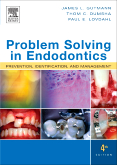Description
Focusing on endodontic problem-solving and troubleshooting
techniques, this book covers ways to avoid problems throughout the
full spectrum of treatment ?from diagnosis to posttreatment. In
delivering a consistently high level of quality care, this approach
follows three steps: how to prevent problems in treatment, how to
identify problems that exist or that occur during treatment, and how
to manage those problems once they are recognized. This edition
offers practical ways to address the most common clinical problems,
scenarios, and issues that pose dilemmas for the student or
clinician.
Key Features
Succinct tables, boxes, and bulleted lists make information easier to
find.
1,150 illustrations show problem-solving techniques put into
practice, allowing for better identification of conditions and
treatments.
Expanded discussion of documentation looks at legal forms and
malpractice issues ?useful preparation for preventing or dealing
with legal situations.
Concise and contemporary reference lists are included at the end of
every chapter.
New to this Edition
New and revised problem-solving cases present various clinical
problems and discuss possible treatment and outcomes. Concise "how-
to" text combined with an abundance of radiographs and photographs
show how these problem-solving techniques apply to everyday practice.
Full-color contemporary design and updated color photos demonstrate
in great detail the need-to-know clinical techniques.
Procedure boxes provide step-by-step instructions and helpful
photographs on important problem-solving techniques.
Clinical Tips boxes offer valuable suggestions for how to prevent or
manage various situations in everyday practice.
Problem Solving list begins each text chapter and presents an "at-a-
glance" outline of topics presented in that chapter.
Contemporary Technologies and Materials chapter expands upon
developments in magnification devices, radiography, handpieces,
locators, and techniques, keeping endodontists up to date.
Vital Pulp Therapy chapter describes pulp capping procedures and
viable procedures for the incompletely formed root apex, providing
more detailed information on treatment options for challenging pulp
conditions and malformed roots.
Microbial Control chapter deals with infection control materials and
techniques, important for successful endodontic procedures,
maintaining a sanitary practice environment, and for protecting staff
and patients from infection.
Challenges in Apical Surgery chapter discusses treatment planning and
procedures for apical endodontic surgery, offering specific problem-
solving strategies for when surgical intervention is essential for
tooth retention.
Challenges in Periradicular Surgery chapter discusses surgical
treatment planning and procedures for problems that occur in
locations other than the apex, offering solutions to challenges such
as fractured teeth, hemisection, and periodontal defects.
Treatment Planning Tooth Retention vs. Tooth Replacement chapter
describes options for keeping the tooth vs. extraction and
replacement.
Endodontic-Orthodontic Clinical Challenges chapter addresses the
impact of orthodontic tooth movement on the viability of dental pulp
and other interdisciplinary issues.
New product information listings at the end of chapters provide
additional information and direct the reader to website listings on
materials and equipment.
-Contents-
Chapter 1 Problem Solving in the Assessment of Treatment Outcomes,
Quality Assurance, and Their Integration into Endodontic Treatment
Planning
Chapter 2 Problem Solving Applications in Contemporary Technologies
and Materials Chapter 3 Problem Solving Vital Pulp Therapy Including
the Management of the Incompletely Formed Root Apex
Chapter 4 Problem Solving in Access Openings, Orifice Locations and
Initial Prepara


